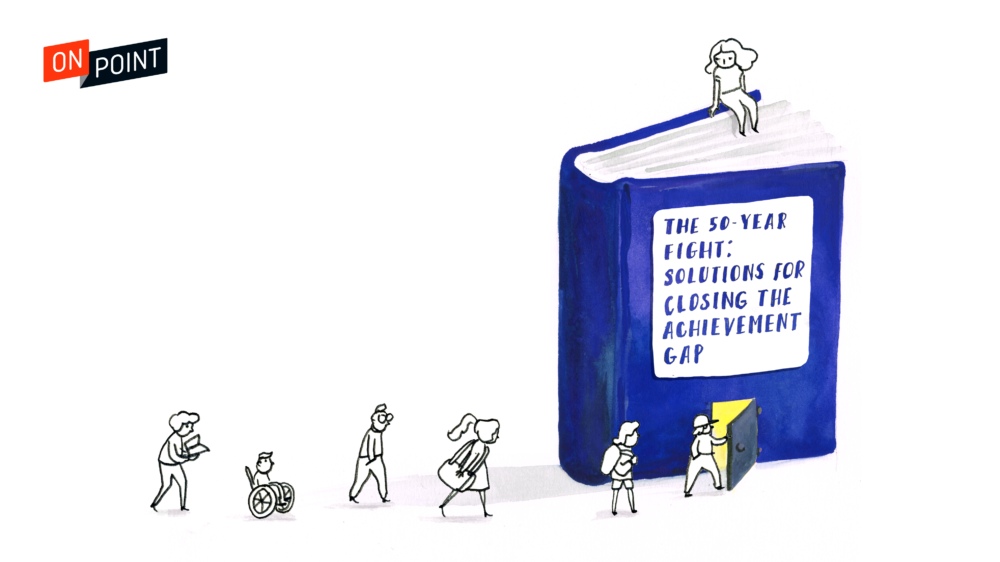Advertisement
Closing The Achievement Gap
The 50-Year Fight: Solutions For Closing The Achievement Gap

Want to check out the entire "50 Year Fight" series? Visit our landing page.
On Point is planning a new four-part series to explore the achievement gap in American K-12 schools, what’s causing it — and what’s working to narrow it.
"Achievement gap" refers to the disparity in academic performance or educational attainment between different groups of students.
Is the achievement gap the result of students' lack of achievement, or the lack of opportunities they're offered? What kinds of things are students working on, building and creating in classrooms? How do we define "good" and "bad" schools — and what do they mean to their surrounding communities?
Here's the series breakdown:
Part I -- What Is The Achievement Gap? (Sept. 9): "The gap" is everywhere — not just urban districts, and not just districts known for low-performing schools. We talk about why the gap between educational achievement, for white students and students of color has been so intractable, where it came from, and whether we should be calling it the achievement gap at all, or the opportunity gap. Is it about students’ lack of achievement, or the lack of opportunities they’re being offered?
Part II — How We Learn (Sept. 16): Rapping to learn iambic pentameter. Folding origami to learn geometry. In this hour, we explore one method of closing the achievement gap: ditching the test prep worksheets, and provide more engaging learning experiences. Scratch the rote learning and standardized test prep, and make time in the classroom hands-on instead. What kinds of things are their students working on, building, creating? What are the challenges? Could every school do this?
Advertisement
Part III — The Knowledge Gap (Sept. 23): Longtime education journalist Natalie Wexler joins On Point to discuss her new book, "The Knowledge Gap: The Hidden Cause of America’s Broken Education System — and How to Fix It." She argues that we’re not providing students who need knowledge the most access to that knowledge, particularly in the way we’re teaching reader comprehension. There’s a large body of research showing what works in teaching reading. So why aren’t our schools using it?
Part IV — School Integration (Sept. 30): There’s actually only one policy that has greatly narrowed the achievement gap across the country. And that’s desegregation. In parts of the country with widespread desegregation, the achievement gap between white students and students of color (particularly black students) narrowed. It wasn’t without costs for students of color — black teachers lost their jobs, community schools were shuttered, and these new desegregated schools were often unwelcoming, losses that have often been hidden/forgotten. But, African Americans who attended desegregated schools were more likely to finish high school, go on to college, and be healthier later on in life. Schools have rapidly resegregated in the past two decades, though. Why, and what’s being done to reverse that trend?
We Need You, Our Listeners
We want to hear from you!
Take this survey, then join us on Mondays in September as we dig into opportunities for schoolchildren, how we learn, the knowledge gap, the history of school integration and more.
And if you have any questions or want to elaborate on any of your answers here, just send us an email at onpointnpr@gmail.com.
And, if you'd rather share your message over the phone, we've got you covered.
Call (617) 353-0683 to leave us a voicemail. We might use your message during a broadcast or online!